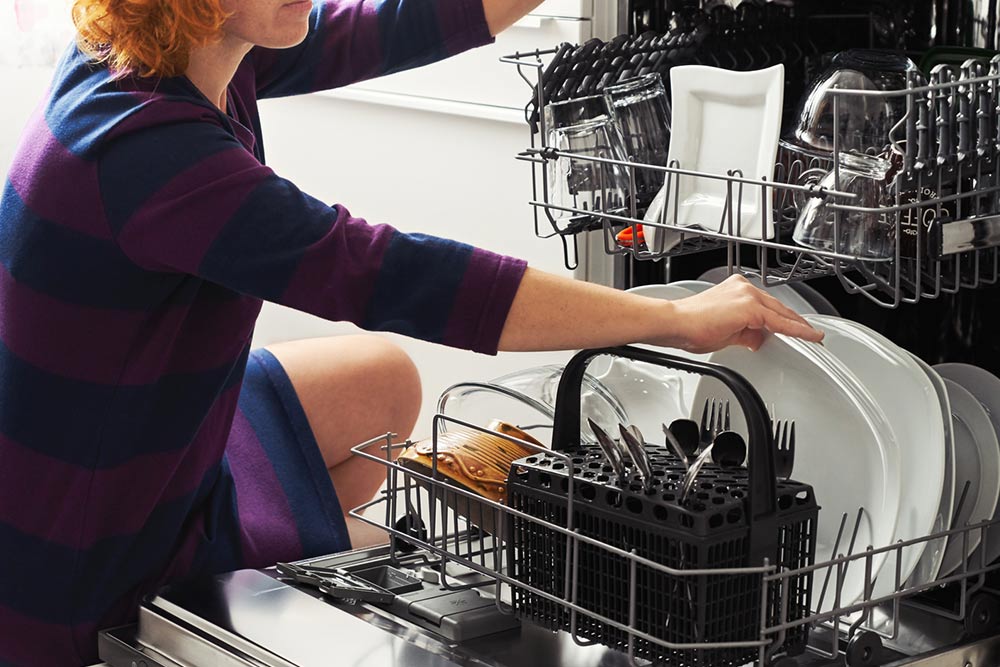8 common dishwasher mistakes to avoid

A dishwasher is a machine that helps homeowners save time and effort by efficiently cleaning kitchen items like dishes, cups, and bowls in an hour or less. These devices remove the burden of cleaning items by hand, significantly reducing stress. Dishwashers can even keep items, so one can find what they need without searching through each drawer or cabinet. But, improper use and certain common dishwasher errors can affect the overall functionality of these machines.
1. Not checking the labels
Homeowners often put an item in the dishwasher without checking if it is “dishwasher-safe.” The heat from a drying cycle may cause wood items, like cutting boards, to break or warp. A dishwasher may also dull sharp knives, blades for food processors, and other kitchen materials. So, instead of putting these items in the dishwasher, one can wash them by hand. Even items made from delicate glass can break, and the shattered shards may get caught up in the pump or hurt the person handling the appliance.
2. Incorrect loading
There is a right way to load a dishwasher, and it’s by following the instruction manual provided by the manufacturer. The rack of each model typically has an alternative layout, and based on the distance between the tines, a designated area is provided for side plates, dinner plates, and bowls. Saucers, drinking glasses, and cups also have designated spaces. So, it is important to follow the recommended layout to ensure each item in the appliance is cleaned thoroughly and safely.
3. Running half-loads frequently
Homeowners who take days to load a dishwasher to maximum capacity might run a cycle at half capacity to avoid odors from soiled items. But this might result in wasting water and electricity because one would technically run more cycles than needed. Solve this problem by leaving the door closed during gradual loading. Also, scrape any residual food debris before placing a plate in the dishwasher. If none of these work, one can consider switching to a smaller dishwasher to reduce the time required to load up the appliance.
4. Loading too many items
Many homeowners try to fit in as many dishes as possible to save on cycles, which is also a mistake. If one overloads the dishwasher, one might notice they come out with a lot of soap scum or residue. A larger load may prevent dishes from getting ample water flow to rinse off properly. Prevent this by ensuring each bowl and dish are properly stacked between the tines. Also, avoid overloading the silverware basket to the point where everything is pressed against each other.
5. Poor dishwasher maintenance
Like most appliances, even dishwashers require frequent cleaning and maintenance. A poorly maintained dishwasher will see grease, limescale, and soap scum build up in the drains and pipes, which could lead to expensive repairs. In some cases, it might call for a replacement, which is costly. Unclean dishwashers could also produce an unpleasant odor. One must check the filter at the base of the dishwasher after every cycle. If food residue is stuck there, it may circulate in the dishwasher with each wash. Remove the residue and clean the filter before placing it back. If deep cleaning of the dishwasher is required, one must wipe down the door’s sides and gaskets with a wet microfiber cloth. Other components that require cleaning include the control panel and accessories inside, such as the spray arm, racks, and the cutlery basket.
6. Blocking the water outlet
Something most people overlook is the pathway of water outlets inside the dishwasher. By incorrectly stacking items in the dishwasher, one might block the water jets, lowering the machine’s efficiency. One must read the instruction manual carefully and ensure the plates are placed in a way that does not obstruct the sprayers.
7. Incorrect unloading
When unloading the rack, one might start with a random area. However, this is incorrect. For instance, when one unloads the top rack of dishes first, the water from the utensils may drip onto the clean dishes below, often making them dirty. One can avoid this by starting with the bottom rack first and moving to the top rack and cutlery basket last.
8. Closing the door after unloading
Most dishwashing appliances use soap and water, which may sit atop rubber parts like door seals. So, when one closes the door immediately after unloading a completed cycle, mold may build up on the seals, which is often hard to remove after it grows, even leaving a stain. One can prevent this by leaving the dishwasher door open slightly after unloading it. Doing so lets the appliance air out and dry, reducing the chances of mold growth.


